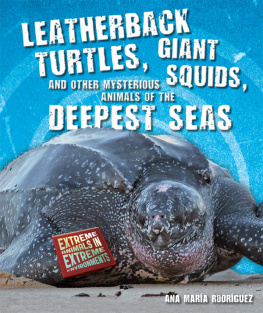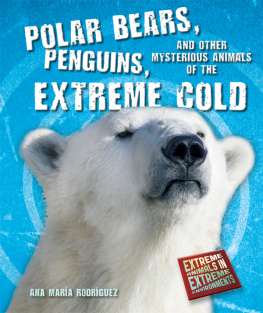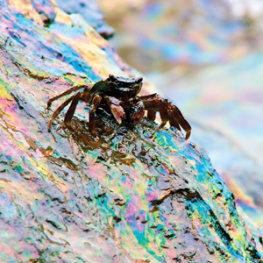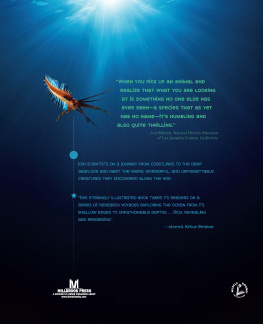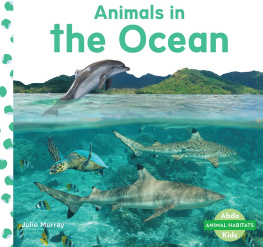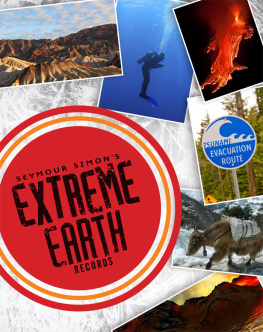EXPLORE THE EXTREME ANIMALS OF THE DEEPEST SEAS!
The ocean is one of the most extreme environments on Earth. The deepest ocean zones challenge animal survival in unique ways. When light and warmth totally disappear, when pressure can crush most bodies, and when food is extremely rare, how do deep-sea animals cope? Scientists have sent remotely-operated vehicles to the sea floor to capture images and videos of these amazing creatures in hopes of answering these questions. Their expeditions have revealed amazing information about extreme deep-sea animals!
ABOUT THE AUTHOR
ANA MARA RODRGUEZ was a scientist doing research in immunology and other biological sciences for over twenty years. She is currently a full-time writer with twenty books published.
You dont know everything, nor have you seen everything. You will be entering a new world [that] will deliver to you its last secrets.
Jules Verne, Twenty Thousand Leagues Under the Sea

Image Credit: Shutterstock.com
This is a yellow anglerfish. There are more than two hundred species of anglerfish, most of which live in the darkest depths of the Atlantic and Antarctic oceans.
In 1869, Jules Verne wrote his book Twenty Thousand Leagues Under the Sea. Sixty-one years later, the fictional deep-sea explorations Verne created came true. In 1930, William Beebe and Otis Barton descended for the first time in a steel, sphere-shaped submersible called the bathysphere to a record-breaking depth of 1,584 feet (435 meters).
In subsequent dives, Beebe and Barton descended to a maximum of 3,000 feet (914 meters). Using a telephone line connecting the bathysphere to the ship on the surface, Beebe radio broadcast his experiences:
1,500 feet (457 meters): Black as Hades. (In Greek mythology, Hades is the underworld kingdom inhabited by the souls of the dead.)
1,550 feet (472 meters): There is plenty of light down here now.
Gloria Hollister, an assistant aboard the surface ship, asked Beebe through the phone: Can you give the light a color?

Image Credit: Enslow Publishers, Inc.
A map of the planets oceans: Pacific, Atlantic, Indian, Southern, and Arctic.
Dr. Beebe shouted: It varies from pale blue to pale green. But all on the very pale side. No deep tone. It must be the normal luminescence of the creatures. Gosh, its cold
Wear your flannels next time, Miss Hollister said.
The ocean is the least studied habitat on the planet. Every time a deep-sea expedition returns, it brings back species that are new to science. One of the reasons is that, for the most part, the ocean is one of the most extreme environments on Earth.

Which is the largest ocean? Which is the second largest? Which is the deepest (in average)? Which is the second deepest?
Seen from space, Earths predominant color is blue because about 70 percent of its surface is underwater. The ocean is the largest habitat of the planet. About 85 percent of the ocean is more than 5,280 feet (1,609 meters) deep. At this depth and below, the ocean is totally dark, almost freezing cold, and applying pressure high enough to crush a golf ball. The ocean holds about 98 percent of the total volume of water on the planet. The other 2 percent is freshwater (rivers and lakes), groundwater (underground), atmosphere water, and frozen water trapped in glaciers and ice caps.
The ocean is in constant motion. Winds power waves, the pull of the moon determines the tides, and differences in water temperature and salt content at different depths drive the underwater currents. These currents circulate constantly around the planet, mixing cold and warm waters, which affect local climates.
However, the temperature of the surface water varies a great deal around the planet. On the equator, temperatures are very warm, sometimes about 88 Fahrenheit (31 Celsius). In the polar regions, surface waters are extremely cold (28F or 2C).
Also, the deeper it is, the colder the water will be, reaching closely to the seawater freezing temperature of 28.6F (1.9C). Seawater freezes at a lower temperature than freshwater (32F or 0C) because it is salty.
The oceans salinityor the amount of minerals it containsis about 35 grams per liter of seawater. The majority of the minerals are sodium and chloridethe components of table salt.

Image Credit: Enslow Publishers, Inc.
Our blue planet as seen from space by Apollo 17 in 1972.
The ocean also has dissolved gases. Oxygen is one of the most important gases because living organisms need oxygen to survive. The colder the water is, the more oxygen it carries. Carbon dioxide, the gas living creatures breath out, is important for plantlike algae. They use it to produce nutrients through the process of photosynthesis.
Scientists have not agreed on an answer to this question yet. Some say that the oceans formed by condensation of the enormous clouds of water vapor present in the atmosphere as Earth cooled down. Rain fell in huge amounts and filled up the basins, or sinks, of the planet.
Another idea is that the water came from outer space. Asteroids and comets have pelted Earth since its early beginnings. Asteroids are big chunks of rock that contain a lot of water. Cometscalled dirty snowballsare mountain-sized blocks of frozen water mixed with rocks. The oceans may have formed as these enormous space bodies struck Earth and released the water inside.
Maybe the oceans formed by a combination of terrestrial and extraterrestrial events.
Water interacts with light. When light waves travel from air to water, they slow down and light bends, or is refracted. Particles suspended in water scatter light. Heat is absorbed by water, warming it up. All colors of the spectrum, except blue and green, are quickly absorbed by water. Water reflects blue and green, and that is why the ocean looks mostly blue. But even blue and green can go only so deep. These colors are completely absorbed at about 3,280 feet (1,000 meters) deep, making the ocean totally dark.
Water interacts with sound. Sound travels through water about four times faster than through air. The speed of sound depends on the temperature, the salinity, and the pressure of the water. At 3,280 feet (1,000 meters) below the surface, these factors combine to produce a zone called SOFAR (SOund Fixing And Ranging). Sounds produced in SOFAR, like a whale trying to locate a mate, for example, travel horizontally only, rather than in other directions. These sounds reach across entire oceans. Because seawater transmits sound better than light, hearing in water is a very important adaptation for many marine creatures.
There are mountain ranges, valleys, and trenches under the sea, just as there are on land. And more than one-third of the ocean floor is flatter than the state of Kansas. The tallest mountain on Earth measured from the base to the peak is not Mount Everest but a dormant underwater volcano in Hawaii called Mauna Kea (33,476 feet or 10,203 meters). The deepest trench under the ocean is the Mariana Trench, which is 35,840 feet (10,924 meters) deep. It is located in the North Pacific Ocean, east of the Philippines.

